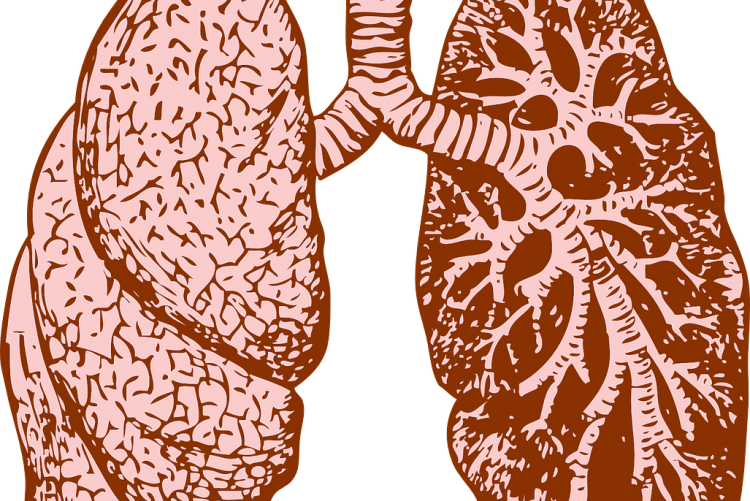MECHANICS OF BREATHING: INSPIRATION: Inspiration is the active part of the breathing
process, which is initiated by the respiratory control centre in medulla oblongata (Brain stem).
Activation of medulla causes a contraction of the diaphragm and intercostal muscles leading to
an expansion of thoracic cavity and a decrease in the pleural space pressure. The diaphragm is a
dome-shaped structure that separates the thoracic and abdominal cavities and is the most
important muscle of inspiration. When it contracts, it moves downward and because it is attached
to the lower ribs it also rotates the ribs toward the horizontal plane, and thereby further expands
the chest cavity. In normal quite breathing the diaphragm moves downward about 1 cm but on
forced inspiration/expiration total movement could be up to 10 cm. When it is paralysed it moves
to the opposite direction (upwards) with inspiration, paradoxical movement. The external
intercostal muscles connect adjacent ribs. When they contract the ribs are pulled upward and
forward causing further increase in the volume of the thoracic cavity. As a result fresh air flows
along the branching airways into the alveoli until the alveolar pressure equals to the pressure at
the airway opening. EXPIRATION: Expiration is a passive event due to elastic recoil of the
lungs. However, when a great deal of air has to be removed quickly, as in exercise, or when the
airways narrow excessively during expiration, as in asthma, the internal intercostal muscles and
the anterior abdominal muscles contract and accelerate expiration by raising pleural pressure.
COUPLING OF THE LUNGS AND THE CHEST WALL: The lungs are not directly attached to
the chest wall but they change their volume and shape according to the changes in shape and
volume of the thoracic cavity. Pleura covering the surfaces of the lungs (visceral) or the thoracic
cavity (parietal) together with a thin (20 µm) layer of liquid between them create a liquid
coupling

